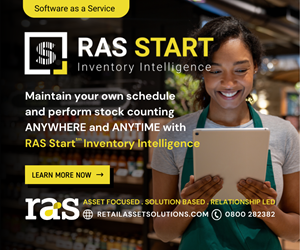Retail Environment
A War on Fuel Loss
I’d like to start by recommending an excellent book to you by General Stanley McChrystal (US Army, retired), Team of Teams: New Rules of Engagement for a Complex World. As the title suggests, this is focused on collaboration in a military setting, and the retired four-star general has concluded that in a world of ever-increasing complexity, networks offer the best chance for organisational success. The book tells the success story of how a joint inter-agency task force in Iraq adopted a strategy of collaborating and creating a data network to empower frontline teams with the intelligence they need to act at pace, and how this ultimately changed the course of the war on terror in Iraq and Afghanistan.
McChrystal argues that these same strategies in a military context are directly applicable to the corporate world. Technologically linked, extraordinarily nimble networks increasingly will run rings around organisations built around nineteenth-century norms of hierarchy and efficiency. Speed is a virtue, and the network must share vast amounts of information in short amounts of time.
But how does this relate to the problem of tackling fuel loss in retail? Let’s first take a look at some definitions and the synergies with the general’s approach.
- Inter-agencies: multiple fuel sites across multiple retailers plus Police forces
- Networks: communication between the inter-agencies
- Technologically linked: real-time sharing of information
- Speed as a virtue: decisions on what information to share at pace
Stopping fuel loss in retail is not quite as serious as collaborating to win a war. The parallel, however, is that retailers are all at war against the same foes who are scattered, decentralised, and motivated.
Start by Looking Inwardly
The first step in the team-of-teams mentality is to look at your own organisation. Take a step back and look at what is currently happening in a pragmatic and self-critical way. Is fuel loss a war worth fighting? Surely, it’s a logical question for which people will have differing views. Arguably, it is a war worth fighting with some retailers reporting around one incident of drive-offs per day per fuel station on average. Some say there are more than that; some less. That reporting would suggest that many more fall into the other categories. Based on these estimates, we would suggest the level of fuel loss to be between 1 and 1.5 per cent of fuel sales in the UK, which equates to around £500 million. This is a very big number and alone gives retailers a strong incentive to resolve the problem.
The reality is that, for many retailers, the tool of choice for tackling fuel loss is to use something between an outdated reporting system and a paper-based reporting system. This does not allow a “cycle of assessment, decision, and implementation” as and when a potential drive-off incident arises. The consequences of that have a big impact on tackling this issue. Some of the consequences include the lack of ability to link crimes together, repeat offenders continuing to profit anonymously, GDPR issues with having paperwork lying in the checkout area, or registration plates on a wall around the checkout that are on the “banned list.” (Yes, really!)
So the problem is big, and the tools being used to resolve the problem are ineffective. We need a plan of attack. Different strategies are already in play around the world on how to advance on the enemy.
Know Your Enemy
Knowing your enemy is crucial to winning a war—how they behave, what their tactics are, and what tools they have at their disposal. Back in May 2020, ECR Retail Loss Group hosted a webinar that demonstrated a highly effective and unobtrusive method of stopping fuel loss and identifying your enemy using automatic number-plate recognition (ANPR) technology.
Joe Nock at Z Energy NZ delivered a superb session on the journey for them in New Zealand, along with some fantastic results. Z Energy operates around 500 fuel sites across the country, operating under multiple brands, and sells around 3.8 billion litres per year. They’ve reduced drive-offs on sites by 70 per cent and recovered 50 per cent of debt (and growing rapidly) whilst also improving their customer experience. They are using ANPR hardware and Auror software to gather data and automate the process of incident reporting and prevention.
Joe talked of the steps in the process:
A vehicle enters site, and ANPR reads the registration plate.
The customer fails to pay (for any reason).
A letter with a picture attached is automatically sent to the owner of the car through the Auror platform, no need for staff to intervene.
When payment is received by the customer, the vehicle is automatically removed from the system.
If no payment is received, the pump operator is automatically alerted from an ANPR detection when that vehicle enters the next time, allowing them to stop the pump from giving fuel.
If the customer enters the store and challenges the locking of the pump, they are given a letter that explains how the system works and why they’ve been refused fuel on this occasion, taking any difficult conversations away from the staff in store.
The Police are integrated with this system, which means they can be alerted when a stolen or cloned vehicle drives on to a forecourt.
Z has the ability to share information with other retailers through the Auror platform.
They share the information with the Police to assist with vehicle-of-interest detection for a wide range of crimes through the Auror platform.
Investing in such a solution can be relatively expensive if you don’t have the necessary hardware in place; however, Joe reported a two-year return from most of his sites. He was considerate about how to roll this solution out, with some of the very-low risk fuel stations not receiving the technology due to the returns being lower.
In addition, we had the privilege of hearing from the New Zealand Police service. They stated that they love having access to the data and that it’s been a game changer in terms of tying together multiple incidents and linking different types of crime together. For example, they caught a burglar using Auror’s automated reporting. The criminal had completed the burglary only thirty minutes before going to fill up with fuel, triggering an ANPR alert that was automatically sent to the tracking Police officer. In addition, as part of their investigation, they can retrospectively look at movements of vehicles and tracking criminals who are committing significant crimes.
Coles is trialling the same combination of platforms in Australia and has gone one step further. They are now linking thefts in their supermarkets and liquor stores to crimes in fuel, which reinforces criminal behaviour evidence and means the Police take these crimes even more seriously. In addition, for Coles, this has taken away the decision from the operators on when to lock the pump, for example where they think someone has stolen before, causing upset and aggravation from customers, especially the genuine customers.
Batten Down the Hatches
Pay at the pump is the traditional method for solving this problem, battening down the hatches to lose less. This is where a customer enters their credit card into the pump prior to dispensing fuel, as a form of preauthorisation. The exact amount is then charged to the customer’s card when they have replaced the nozzle in the pump.
It’s pretty effective in terms of reducing loss. Taking payment before pumping is a logical thing to do, with no issues on people not being able or willing to pay. Customers also like how it speeds up this process—just fill and go. The decision to move to this approach has a potential consequence where customers may not come into the store and make additional purchases, a key driver of fuel sites’ profitability.
Many fuel stations offer the customer the option of pay at the pump or pay in store. Naturally, this doesn’t solve the loss problem as the criminals will use the “pay” in store pumps rather than the prepay.
In the US, some states require retailers to have all of their pumps as prepay. This was reportedly due to two reasons. The first was that drive-offs had grown so great over time that the Police were unable to respond to the propensity of this problem. The second was to improve bookkeeping of fuel court operators for IRS tax purposes, as there were multiple cases of under-reporting fuel sales.
The upside of pay at pump from a customer perspective is speed. Other customers filling up and spending twenty minutes in a store picking up some shopping slows the entire process down, with their car left at the pump until concluding their shopping and fuel purchase. Pay at pump clearly speeds this process up, especially in busy fuel sites. However, when a customer is forced to use the pay at pump, what impact does it have on them? Is it fair to “batten down the hatches” for all, when it is only a few that are committing crimes?
Pay at pump is an option, but in the spirit of “lose less, sell more,” it’s likely not the most effective way to tackle this problem, hence why fewer retailers have taken this approach. In addition, consideration needs to be given to the impact being felt by all customers, just because the few are untrustworthy.
Returning Fire
Returning fire is when the foe has fired first and the retailer fires back. Recovering losses is a reasonably effective way of dealing with the issue of errors and no means of payment. There are plenty of recovery programmes available, usually legal civil recovery types of organisations, which can also be relatively effective. That is, of course, when customers don’t return of their own fruition, which will happen much of the time by genuine customers.
There are many challenges, though, with recovering money in a more traditional way from people who don’t return to pay. The retailer must rely on the user giving their correct details in the first place. The incident needs to be reported accurately. The customer needs to take the letters they receive seriously and act upon it. The follow-ups need to be consistent and seen through to a conclusion.
Arguably the best way to recover unpaid money is through the use of ANPR, where someone can only get away with drive-offs once. After that point, ANPR can automatically detect a returning non-payer and block the pump from being used until they have paid what they owe. This is a much more effective way of recovering money as it continually prevents further abuse until the debt is settled. It’s being used very effectively by Z Energy as covered in the ECR Retail Loss Group's webinar.
Tackling the War, Not Just the Battle
The battle is fixing the internal losses within your own organisation. The war is to fix the bigger picture, which requires, as General McChrystal refers to, that collaboration can drive “broader, faster, and more effective success.” He also adds that collaboration can achieve “a pace not previously considered possible.”
Some of the broader (war-sized) issues that exist are indicative of this need for collaboration between retailers and Police forces, for example, vehicle theft, which is not specifically a retailers’ issue. With 154 vehicles stolen every day in the UK, these cars need fuel. Identifying these cars at that point will significantly increase the chances of those vehicles being recovered and improve the ability of the Police to identify the culprits. Reportedly, many stolen cars are not used for onward crime, unless cloned. Rather, they are broken down and sold in parts, or shipped to another country where they are harder to trace. In New Zealand, the vehicle theft database is integrated with the Auror database, giving instant alerts to the Police as stolen cars arrive at a fuel site.
Vehicle cloning is another challenge that is growing exponentially. In the UK this was estimated at 4,800 incidents. That’s just the reported incidents, so the true number could be as high as 10,000 or more. This crime is usually only reported when the genuine plate owner receives a speeding fine or parking fine, or when the Police identify a cloned plate on a stop. Identifying incidents of fuel crime by cloned cars also increases the likelihood of the criminal being caught in the act, especially combining this with CCTV.
The reality of winning a war is that retailers are naturally competitive, yet in loss prevention and asset protection the view is universally that loss is not a competitive issue. General McChrystal summarises collaboration as “a collective effort that is so interwoven it defies any assignment of individual credit.” This is a powerful statement but remains a challenge in a retail environment that requires a step change in approach from where we are currently. To win a battle is great; to win a war is phenomenal.
Victory Day
If the war is won and V-day comes, how can you exploit this win further? In the ANPR example, how can you ensure you get benefit from the investment? What if this solution could actually help to lose less and sell more? Let’s explore some of the initiatives that become possible with this technology in terms of sales and bringing value to genuine customers.
Fast lanes using ANPR to pay for fuel means customers don’t need to leave their cars at all.
Prebuying fuel would be great for small businesses or families. Credit that has been purchased can be shared with others. Think family or business mobile phone plans but with fuel.
Linking the car registration plate to a loyalty programme gives the opportunity to push more relevant offers to the customer or to automatically recognise the customer’s loyalty to the brand.
App purchases in advance would allow you to order your coffee, sandwich, or other item from your phone. ANPR picks up when you enter the forecourt, and it’s ready for when you come in to pay.
Staff discounts could be negotiated with large or small organisations to buy the fuel from you, giving them a discount on in-shop purchases with ANPR triggering the discount.
Hopefully, social distancing will soon become a thing of the past, but there are always customers who need to protect themselves from any kind of infection, so giving them the option of no-contact payment is a useful service.
Commercialising the ANPR operation as Z Energy has done is eminently doable. It could improve sales and service whilst at the same time protecting the fuel court from loss.
What needs to be true? All that needs to be true is the right approach and mindset to win the war. I consistently hear two challenges that make the possible seem impossible:
Police structure and response. With forty-three Police forces in the UK, each operating slightly differently, how can we ensure that the Police respond? In addition, the Police have competing priorities and understandably need to prioritise the most serious crimes. The traceability of criminals around the country resulting from a solution like Z Energy has implemented is clearly of great benefit to the Police forces. Stolen vehicles are a big priority, with one assistant chief constable in the UK dedicated to the national problem of vehicle crime. Pulling multiple crimes together shows a trend in behaviour, which is likely linked to more serious crime, so a retailer arguably has a responsibility to pull this information together to ensure convictions are more likely. Police will often not respond right away because the scale of the issue and intelligence given to the Police is one dimensional, about that one offence that has taken place. This is somewhat a chicken and egg situation. Someone needs to blink first, and in the example of Z Energy, it’s the retailer that has done so.
GDPR. GDPR is a prohibitor, or is it? As a loss prevention team, have you discussed the issue with your data protection officer (DPO) to explore what is possible rather than assuming that keeping this kind of data will break rules? Z Energy did just that and found that the use of data for criminal investigations is a completely legitimate use of data. As such, their DPO was comfortable to sign off on the process, ensuring all of the legal requirements were met. Collectively, as loss prevention and asset protection teams, it’s vital that GDPR is not continually put in the way of tackling crime. The GDPR laws are there to protect the innocent.
Final Thoughts
Throughout this article I referenced General McChrystal and the synergies between fighting a common foe. One point that sticks with me is where he stated that his journey at the start was considered “not previously considered possible.” Many people will no doubt read this article and consider that this is the case with the fuel loss problem. I disagree.
Arguably the “war” is actually to fix the broader issues of car crime, making the customer journey more frictionless, and making the fuel loss issue the battle. There’s really just one answer for winning this broader war: collaboration. That could be internal collaboration, with other retailers, and/or with Police forces. There are some highly effective and proven tools available to take retailers from where they are now, having local skirmishes, to winning the war collaboratively. The question is whether you are motivated to use these tools and fight a good fight together.






